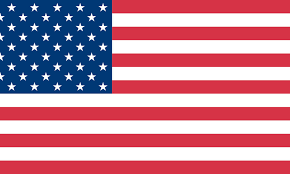Packing VS Packaging: What Are the Major Differences?

Have you ever wondered about the differences between packing and packaging? Though they sound similar, these two terms refer to distinct processes that are crucial in the world of shipping, retail, and product management. Understanding these differences can help you make better decisions for your personal or business needs. Let's dive deeper into the concepts of packing and packaging and explore how they differ.

What Is Packing
Packing refers to the act of placing items into containers for storage, transport, or sale. It is all about ensuring that the items inside are safe and secure until they reach their final destination. In simple terms, when you're putting your belongings into boxes for a move or wrapping products for shipment, you are involved in packing.
Packing often involves materials like bubble wrap, foam peanuts, and corrugated boxes. The primary goal here is protection. When we pack items, we want them to arrive in the same condition they were in when they left. This process is essential for preventing damage during transit and handling.

Additionally, packing can also include labeling boxes with important information such as contents, handling instructions, or destination addresses. This helps ensure that everyone involved in the transportation process knows how to handle each package correctly.
Types of Packing
Now that we've covered what packing is, let's transition to discussing the various types of packing. There are three main categories: primary, secondary, and tertiary packing.
-
Primary packing
Primary packing is the first layer of protection for a product. It directly touches and holds the item itself. For example, if you purchase a bottle of shampoo, the bottle is the primary packing. This type of packing serves several purposes: it protects the product from contamination, provides information such as ingredients and usage instructions, and makes the product look appealing to consumers.
-
Secondary packing
Secondary packing surrounds the primary packing and provides additional protection. It often groups multiple units together to make handling and transportation easier. For instance, a cardboard box holding multiple bottles of shampoo is considered secondary packing. Besides offering an extra layer of protection, secondary packing helps in organizing and storing multiple items efficiently.
-
Tertiary packing
Tertiary packing is used mainly for bulk handling, storage, and transportation. This includes pallets, shrink wraps, and large shipping crates. Tertiary packing ensures that large quantities of goods are moved safely and efficiently through the supply chain. It is especially important for long-distance shipping and storage in warehouses.
Examples of Packing
Let's move on to some examples of packing to give you a clearer picture:
| Item | Primary packing | Secondary packing | Tertiary packing |
| Shampoo | Plastic bottle | Cardboard box | Wrapped pallet |
| Cookies | Plastic wrapper | Printed carton box | Shipping crate |
| TV | Foam box | Outer protective box | Wooden crate |
These examples demonstrate how different layers of packing work together to protect and organize products at various stages.
What Is Packaging?
Packaging, on the other hand, encompasses a broader scope than packing. It involves not only the containment and protection of products but also branding, marketing, and providing information to consumers. Packaging is all about how the product is presented and perceived.

Good packaging is designed to be visually appealing and informative. It plays a significant role in attracting customers and can influence purchasing decisions. For instance, a beautifully designed box with vibrant colors and clear labels can make a product stand out on the shelves.
Moreover, packaging also considers sustainability and environmental impact. Many companies now opt for eco-friendly materials to appeal to environmentally conscious consumers and reduce their carbon footprint.
Examples of Packaging
To better understand packaging, let’s look at some examples:
|
Product |
Packaging Material |
Purpose |
|
Perfume |
Glass Bottle and Box |
Protection and Branding |
|
Snack Chips |
Foil Bag |
Freshness and Information |
|
Smartphone |
Branded Box |
Protection and Marketing |
These examples show how packaging is used not just for protection but also for communication and branding.
Key Differences between Packing and Packaging
Now, let's compare and explain four key differences between packing and packaging.
1. Purpose: While packing is primarily concerned with protecting the product during transit and storage, packaging focuses on both protection and presentation. Packaging aims to attract customers, convey brand identity, and provide necessary information.
2. Materials: Packing typically uses materials like bubble wrap, foam peanuts, and sturdy boxes to ensure safety. On the other hand, packaging involves a wider range of materials including glass, plastic, paperboard, and metal, chosen for their aesthetic appeal and functionality.
3. Complexity: Packing is generally simpler and more straightforward. It's about wrapping and securing items. Packaging, however, involves design, branding, and regulatory considerations, making it a more complex process.
4. Consumer Interaction: Consumers rarely interact with packing materials beyond the initial unboxing. In contrast, packaging has a direct impact on consumer experience and perception. It influences buying decisions and enhances the overall product experience.
All in all, choosing the right materials for packaging is crucial. Munbyn, a leading supplier of packaging solutions, offers reliable and high-quality materials for packaging. Their range includes transparent shipping tape, honeycomb wrapping materials, stickers, and labels. These products are designed to ensure that your items are well-protected while also looking professional and appealing.
Its transparent shipping tape is perfect for sealing packages securely without compromising on aesthetics. The honeycomb wrapping materials provide excellent cushioning and are eco-friendly, making them ideal for businesses that prioritize sustainability.
Ending Words
In conclusion, while packing and packaging may seem similar, they serve different purposes and involve different materials and processes. Packing is primarily focused on protection and ensuring items are safe during transit, whereas packaging encompasses protection, branding, and consumer engagement. Understanding these differences can help you make better choices for your personal or business needs. Whether you’re moving, shipping products, or launching a new product line, knowing when to prioritize packing or packaging will ensure your items are safe, appealing, and ready for the market.


